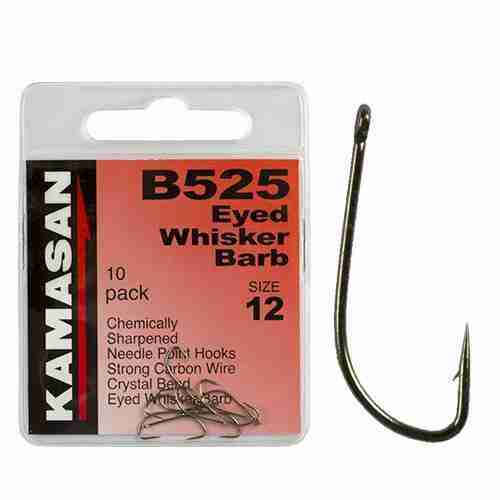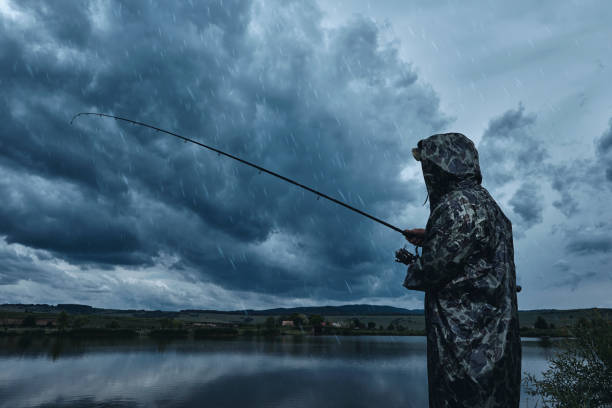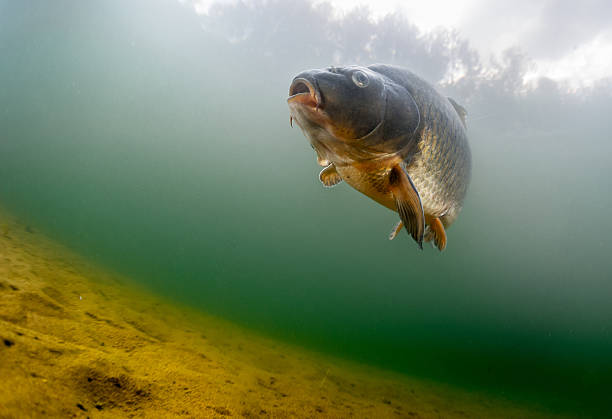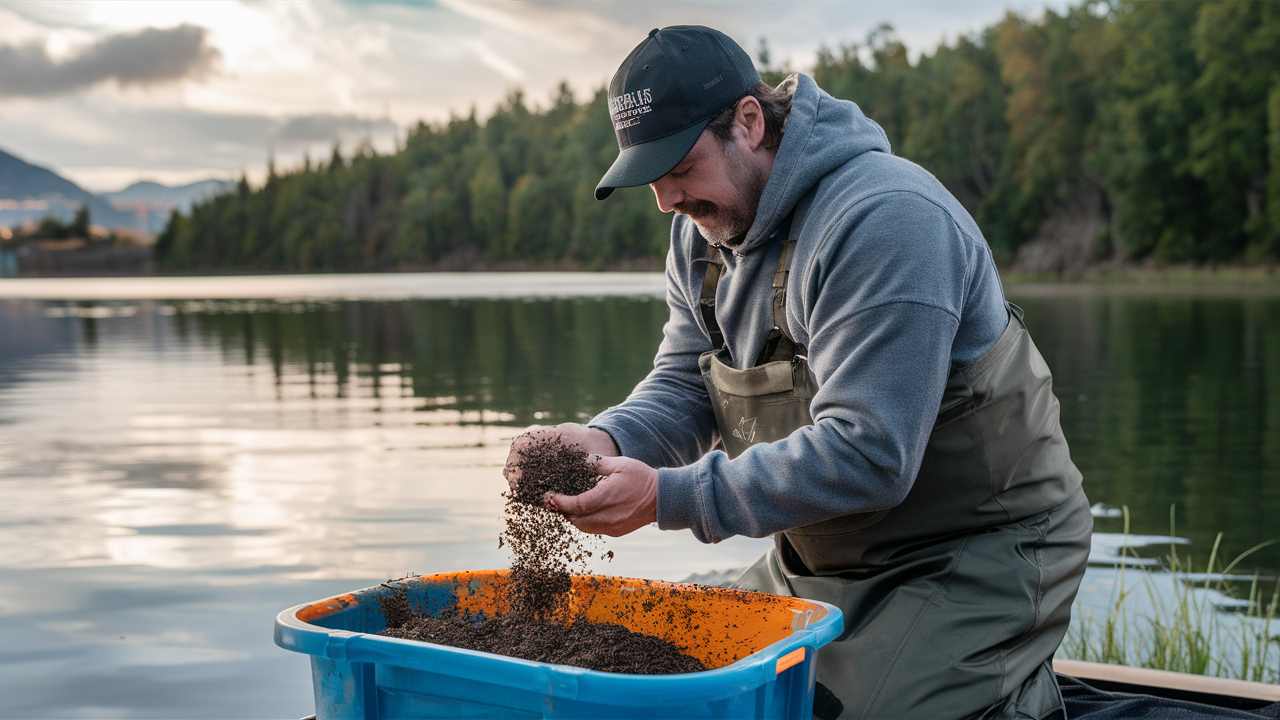
Summer Homemade Fishing Groundbait

19 min read
When the summer sun beats down and the waters warm up, fish behavior changes dramatically. Their feeding patterns shift, their metabolism kicks into high gear, and—if you’re smart about it—your catch rate can soar. The secret weapon in your summer fishing arsenal? A properly crafted homemade groundbait.
In this comprehensive guide, we’ll examine groundbait components in detail and discuss how to apply them effectively in different fishing scenarios. By the end, you’ll have several proven recipes tailored for specific situations.
Why Bother Making Your Own Summer Groundbait?
Store-bought groundbait works fine, sure. But homemade? That’s where the magic happens.
First off, let’s talk money. Commercial groundbaits can get pretty expensive, especially when you’re using bucketfuls during active summer feeding periods. Making your own cuts costs dramatically—I’ve calculated savings of up to 70% compared to premium store brands.
But the real advantage goes beyond your wallet. When you mix your own, you gain complete control over:
- Exact ingredients and their proportions
- Attractant levels and types
- Breakdown speed in various water temperatures
- Texture and cloud formation
- Feeding triggers specific to your target species
Plus, there’s something deeply satisfying about catching fish on a mix you crafted yourself. It connects you to the fishing tradition in a way that tearing open a commercial bag never will.
Understanding Summer Fishing Dynamics
Before we start mixing, we need to understand what makes summer fishing different. When water temperatures climb above 65°F (18°C), most freshwater species become considerably more active. Their metabolism increases, which means they need more food—but they also become more selective about what they eat.
In summer, fish often:
- Feed more frequently but in shorter bursts
- Seek cooler, oxygen-rich areas during midday heat
- Respond strongly to scent and flavor in warmer water
- Become more competitive when feeding
Your homemade groundbait needs to account for these behaviors. The perfect summer mix creates an attractive scent cloud, breaks down at the right speed for the conditions, and contains enough food particles to keep fish interested without overfeeding them.
Proven Summer Groundbait Recipes
Running Water Groundbait
- 50% Roasted breadcrumbs (hard crumbs)
- 20% Marshmallows
- 20% Cornmeal (polenta)
- 10% Finely ground roasted peanuts
Standing Water Groundbait
- 40% Breadcrumbs/rusks
- 20% Ground brown peanuts
- 20% Toasted coconut flakes
- 10% Ground roasted peanuts
- 10% Ground hemp
The Science Behind Effective Summer Groundbait
Before diving into recipes, you need to understand the principles that make summer groundbait work:
Activity Level vs. Feeding Trigger
In warm water, fish are more active but not necessarily feeding constantly. Your groundbait needs to create a feeding trigger potent enough to convert activity into actual feeding behavior. This is where most commercial products fail miserably.
The Cloud-to-Bottom Ratio
Summer groundbait needs what I call the perfect “cloud-to-bottom ratio.” Too much cloud, and fish get preoccupied with suspended particles. Too little cloud, and you fail to draw fish into your swim. The ideal summer mix creates an initial attractive cloud that settles quickly, forcing fish to feed on the bottom where your hook bait waits.
I discovered this principle accidentally while fishing the Thames in July 2008. My groundbait had gotten wet during a rainstorm the night before, changing its consistency. What seemed like a disaster turned into one of my best fishing sessions ever, as the altered texture created the perfect cloud-to-bottom ratio.
Release Speed and Duration
Summer groundbaits require a balanced release of attractants—fast enough to draw fish quickly in warm water, but sustained enough to hold them in your swim for hours. This is primarily controlled through ingredient selection and particle size.
Core Ingredients: The Foundation of Summer Success
After experimenting with literally hundreds of combinations over the years, I’ve settled on these core ingredients that form the foundation of all my summer mixes:
Base Ingredients
Breadcrumb - The cornerstone of any groundbait. I use a 50/50 mix of fresh white breadcrumbs and dried breadcrumb. The fresh bread breaks down quickly, creating that initial cloud, while the dried breadcrumb provides structure and slower breakdown.
Don’t waste money on packaged breadcrumb. I buy day-old bread from the local bakery for pennies, dry some in the oven at 120°C for 20 minutes, and blitz it in a food processor. The difference between this and store-bought breadcrumb is night and day.
Biscuit Crumb - Adds sweetness and a unique breakdown pattern. Digestive biscuits work brilliantly, creating a distinctive cloud that lingers at mid-depth before settling. I typically use 20% biscuit crumb in summer mixes.
Corn Flour or Fine Semolina - Critical binding agent for summer groundbait. When the water’s warm, you need something that holds everything together longer against heightened fish activity. I add 10-15% corn flour to summer mixes, adjusting based on swim depth and current.
Protein Elements
Summer fish need protein, and lots of it. Their metabolism is running high, and protein-rich groundbait consistently outperforms carb-heavy mixes when temperatures rise.
Fishmeal - The heavy-hitter in summer groundbait. I use freshly ground pellets rather than pre-packaged fishmeal. The oils are fresher, and the attractants more potent. Around 20-30% of my summer mix is usually fishmeal component.
Hemp Meal - My secret weapon in summer groundbait for nearly twenty years. The natural oils in hemp create an unmatchable slick on the water surface, drawing fish from impressive distances. I grind my own from whole hemp seeds (25% of which I leave whole for added texture).
Flavor Profiles That Trigger Summer Feeding
The aromatics in your groundbait matter tremendously in summer. Fish have heightened sensory perception in warm water, allowing you to use this to your advantage.
Sweet Profiles
Sweet flavors dominate commercial products, but most get it wrong. Natural sweetness works infinitely better than chemical sweeteners in summer. I use:
Molasses Powder - Not liquid molasses, which makes binding difficult, but the powder form. It provides a complex sweetness that releases slowly in warm water. I add 3-5% to most summer mixes.
Condensed Milk Powder - Another game-changer I discovered by accident. The combination of sweetness and dairy proteins creates a uniquely attractive profile that works especially well for bream and carp in summer. Just 2-3% transforms an ordinary mix.
Spicy Profiles
Spices have been my consistent edge in summer fishing for two decades. While other anglers pour in synthetic strawberry and scopex flavors, I’ve had remarkable success with:
Turmeric - Not just for color, but for its distinctive earthy aroma that seems to drive carp, tench, and crucian carp wild in summer. I use 1-2 teaspoons per kilo of mix.
Ground Coriander Seeds - My absolute must-have spice for summer groundbait. The citrusy, slightly spicy profile is devastating on still or slow-moving waters. One teaspoon per kilo is plenty.
Black Pepper - Controversial addition, but one I’ve proven works time and again in clear water conditions. Just a pinch per kilo creates a subtle heat that curious fish can’t resist investigating.
Texture Management: The Most Overlooked Aspect
Here’s where most anglers get summer groundbait catastrophically wrong—they focus on ingredients but ignore texture. In warm water, texture is everything.
Particle Size Variation
Summer groundbait should contain at least three distinct particle sizes:
- Fine Powder (20%) - Creates immediate cloud and attraction
- Medium Crumb (60%) - Forms the structural base that breaks down over hours
- Coarse Particles (20%) - Provides feeding triggers and keeps fish searching
I achieve this by processing different components separately rather than blending everything together at once. The difference in effectiveness is remarkable.
Binding Strength by Water Type
One groundbait consistency does not fit all summer venues:
Still Waters - Looser consistency that breaks down more readily, creating a broader attraction pattern
Slow-Moving Rivers - Medium binding with higher oil content to create a scent trail downstream
Fast Flows - Heavy binding with clay or soil addition to ensure the groundbait reaches bottom before breaking up
I learned this lesson painfully on the Severn one August, when my usual mix washed away uselessly in the unexpected flow. Now I always prepare with varying binding agents ready to adjust streamside.
My Three Proven Summer Recipes
After countless refinements, these three recipes have consistently produced results across different summer conditions:
1. The Bream Destroyer
This mix has accounted for more double-figure bags of summer bream than I can count:
- 40% fresh breadcrumb
- 20% dried breadcrumb
- 15% ground Halibut pellets
- 10% hemp meal (with 25% whole seeds)
- 5% fine semolina
- 5% digestive biscuit crumb
- 3% molasses powder
- 2% condensed milk powder
- 1 teaspoon ground coriander
- 1 teaspoon turmeric
Mixing Instructions: Combine dry ingredients thoroughly before adding water. Mix with your hands, not tools. Add water gradually until the mix forms a ball when squeezed but breaks easily under gentle pressure. Let it rest for 15 minutes, then add final water adjustments.
2. The All-Rounder
When I’m not sure what species I’ll encounter, this balanced mix draws everything from tench to roach:
- 30% dried breadcrumb
- 20% fresh breadcrumb
- 15% ground mixed pellets (50/50 halibut/trout pellets)
- 10% fine ground corn
- 10% crushed hemp (not ground to powder)
- 5% ground sunflower hearts
- 5% biscuit crumb
- 3% corn flour
- 2% molasses powder
- ½ teaspoon black pepper
- ½ teaspoon turmeric
Mixing Instructions: Same as above, but this mix benefits tremendously from a double-wetting process. Mix to slightly drier than ideal, let rest for 30 minutes, then add final water to perfect consistency.
3. The Carp Special
When targeting summer carp specifically, this mix has produced consistently in temperatures above 20°C:
- 25% dried breadcrumb
- 20% ground halibut pellets
- 15% fresh breadcrumb
- 10% crushed hemp
- 10% ground tiger nuts
- 5% corn flour
- 5% molasses powder
- 5% crushed birdseed mix
- 3% ground dried bloodworm
- 2% condensed milk powder
- 1 teaspoon turmeric
- ½ teaspoon chili powder
Mixing Instructions: This mix requires careful wetting as the high oil content from the pellets and hemp can make it bind unpredictably. Always mix drier initially, then gradually adjust.
Field-Testing Your Groundbait
Never, ever go fishing with untested groundbait. I test every new mix in a clear container at home before taking it to the bank. Here’s my testing protocol:
- Fill a clear vase or jar with water
- Drop in a golf ball-sized amount of compressed groundbait
- Time how long it takes to start breaking down
- Watch the cloud pattern develop
- Observe how much material sinks vs. suspends
- Check the water clarity after 5 minutes
In summer, I’m looking for a mix that creates an initial burst of cloud that begins clearing within 2-3 minutes, with approximately 70% of the material settling to the bottom relatively intact.
Groundbaiting Strategies That Actually Work
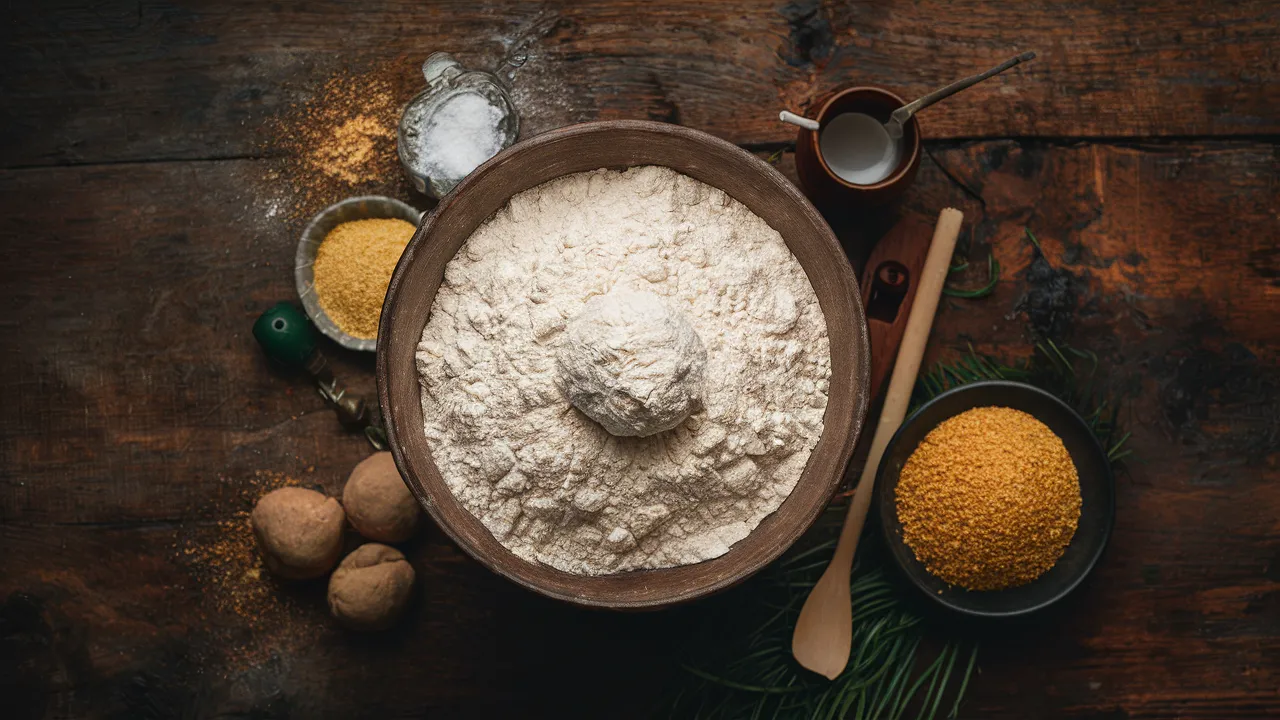
Now that we understand individual ingredients and their properties, let’s explore strategic combinations. The optimal mix depends on the water body, water clarity, bottom composition, depth, and target species. Here are some scenario-specific approaches:
Initial Feeding
My approach has evolved dramatically over the years. I now use a much larger initial feed than most anglers—typically 6-8 tennis ball-sized balls for summer fishing. This creates a substantial food source that draws and holds fish better than the timid approach most anglers take.
Maintaining the Swim
For summer fishing, regular small top-ups work better than occasional large reinforcements. I typically introduce a golf ball-sized amount every 15-20 minutes, regardless of whether I’m catching. Consistency in feeding pattern matters tremendously in warm water.
Strategic Placement
In summer, I typically create two distinct feeding areas—one directly in front at 11-12 meters, and another slightly to the side at the same distance. This gives me options when fish behavior changes during the session.
Shallow Lake with Muddy Bottom (1m deep)
Target: Small Rudd and Bream
For muddy-bottomed lakes, avoid heavy groundbait that might sink into the silt, rendering it ineffective. Dark crumbs, biscuit flour, or peanut flour provide a good base. Add hemp flour for its attractive aroma without binding properties. Consider supplementing with dead white worms or pinkies. For winter fishing, incorporate clay to reduce nutritional value, and favor coriander over vanilla.
Medium-Depth Lake with Hard Bottom (3m deep)
Target: Rudd and occasional Bream
These conditions require groundbait with better binding properties but not excessive nutritional value. Include particles that rise to the surface. Use breadcrumbs and bread crumbs as your base. If predatory fish are present, add dark bread crumbs to make fish feel more secure on a darker feeding spot. To attract Bream, consider adding wafers with vanilla aroma.
Deep Lake with Hard Bottom (3m deep)
Target: Large Bream at distance from shore
This scenario requires groundbait with:
- High nutritional value
- Excellent binding properties
These characteristics ensure your groundbait reaches distant spots and provides sufficient nutrition for larger fish. Bream prefer sweeter foods, so include wafer crusts and chocolate chip cookies. Corn pomace and biscuit breadcrumbs offer strong binding properties. Consider adding anise aroma alongside the vanilla from wafers. If fish hold well on your feeding spot, incorporate live bait, which is feasible due to your groundbait’s strong adhesive qualities.
Canal with Little Shipping (3m deep)
Target: Rudd and small Bream while avoiding Bleak
Your groundbait should be minimally active with low-nutritional ingredients to avoid attracting Bleak. The limited shipping means heavy groundbait isn’t essential.
Canal with Intensive Navigation (4m deep)
Target: Rudd and Bream at 13m distance
Use groundbait similar to river fishing—heavy with good binding properties to deliver substantial feed to the canal bottom despite shipping disturbances. Include ingredients that create a slight cloud to attract and retain fish. Consider adding clay for additional weight to resist displacement from passing vessels.
Canal with Little Navigation (4m deep)
Target: Rudd at 30m distance
Medium-heavy groundbait with sufficient stickiness for long-distance casting. Since Rudd feed in mid-water layers, design your bait balls to begin disintegrating upon water contact.
Shallow River (2m deep)
Target: Mixed species with 6g float
Relatively heavy groundbait with moderate stickiness. Include active ingredients like flaxseed that trigger strong fish responses. Feed small amounts frequently and incorporate plenty of live bait.
Deep River (5m deep)
Target: Large Bream with 10g float
Heavy, highly adhesive groundbait with abundant bait to reach the riverbed effectively. Key ingredients include rusks and biscuits. Vary ball compression to control breakdown rates.
Reservoir with Large Bream Population
Substantial groundbait with high nutritional value to bypass smaller fish. Pellets work well in this scenario. Add biscuit breadcrumbs for stickiness to accommodate additional bait, but avoid excessive adhesion.
Lake Targeting Rudd
Lightweight groundbait with low nutritional value components. Typical ingredients include ground kompo, toasted coconut flakes, and brown peanuts.
River with Very Strong Current
Target: Bream
Add gravel to your groundbait and make it extremely sticky so balls reach the bottom without being swept away by current. Components must be heavy and large enough to remain stationary while gradually disintegrating.
Common Summer Groundbait Mistakes
After watching countless anglers struggle with summer groundbait, these are the errors I see repeatedly:
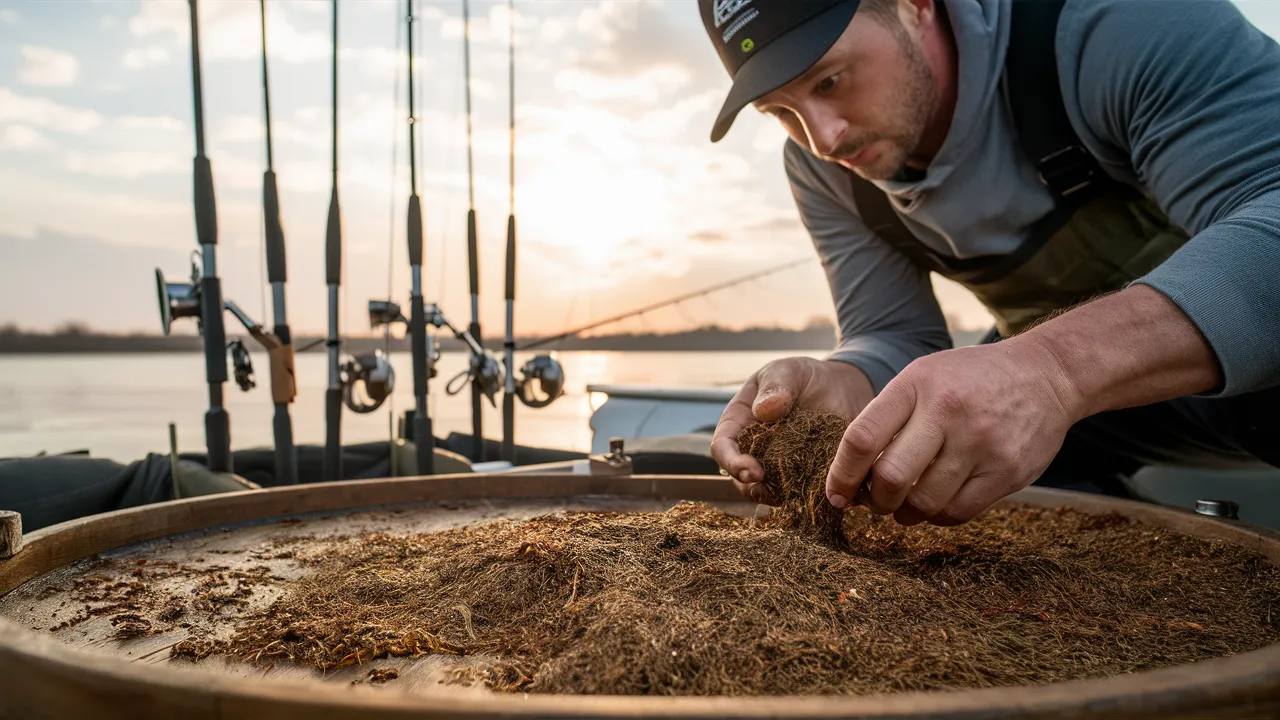
Overcomplicating the Mix
More ingredients doesn’t mean better groundbait. I’ve seen anglers mixing 15+ components thinking they’re creating some magical formula. My most effective mixes rarely exceed 10 ingredients total.
Ignoring Water Temperature Variations
Even in “summer,” water temperatures can vary by 5-6°C from day to day. I bring groundbait enhancers to adjust according to conditions—more hemp and spice for warmer days, more sweet elements for cooler periods.
Failing to Adapt to Water Clarity
Clear summer water demands different groundbait than colored water. I reduce cloud-creating elements by about 25% when fishing gin-clear venues, focusing instead on bottom-hugging attraction.
Cost-Effective Production at Scale
One huge advantage of homemade groundbait is cost savings. I produce all my summer groundbait for roughly 30% of commercial prices. Here’s how:
- Bulk Purchasing - I buy breadcrumb ingredients in 10kg sacks from catering suppliers
- Pre-season Prep - I process base mixes in winter, storing them in sealed buckets
- Modular System - I create base mixes that can be customized streamside with smaller additive packs
The Art of Customization: Target-Specific Ingredients
Now comes the fun part—tailoring your mix to target specific summer fish. Let me share some proven winners:
For Summer Carp
Carp go crazy for sweet, fruity scents when the water’s warm. Try adding:
- Ground up boilies in fruity flavors
- Canned corn juice
- Molasses (just a tablespoon or two)
- Crushed hemp seeds for their natural oils
For Bream and Roach
These fish respond well to cloudy groundbaits with lots of particles:
- Extra fine breadcrumbs for cloud effect
- Ground hempseed
- Crushed coriander seeds (trust me on this one)
- Vanilla extract (just a few drops)
For Tench and Barbel
These hard-fighters love a mix with:
- Chopped worms or worm extract
- Crushed pellets
- Freshly ground hemp
- A dash of liquid liver extract
The river barbel near my home go absolutely berserk for groundbait containing crushed tiger nuts. It’s not the easiest ingredient to find, but well worth the effort when targeting these summer torpedoes.
Water Temperature Considerations
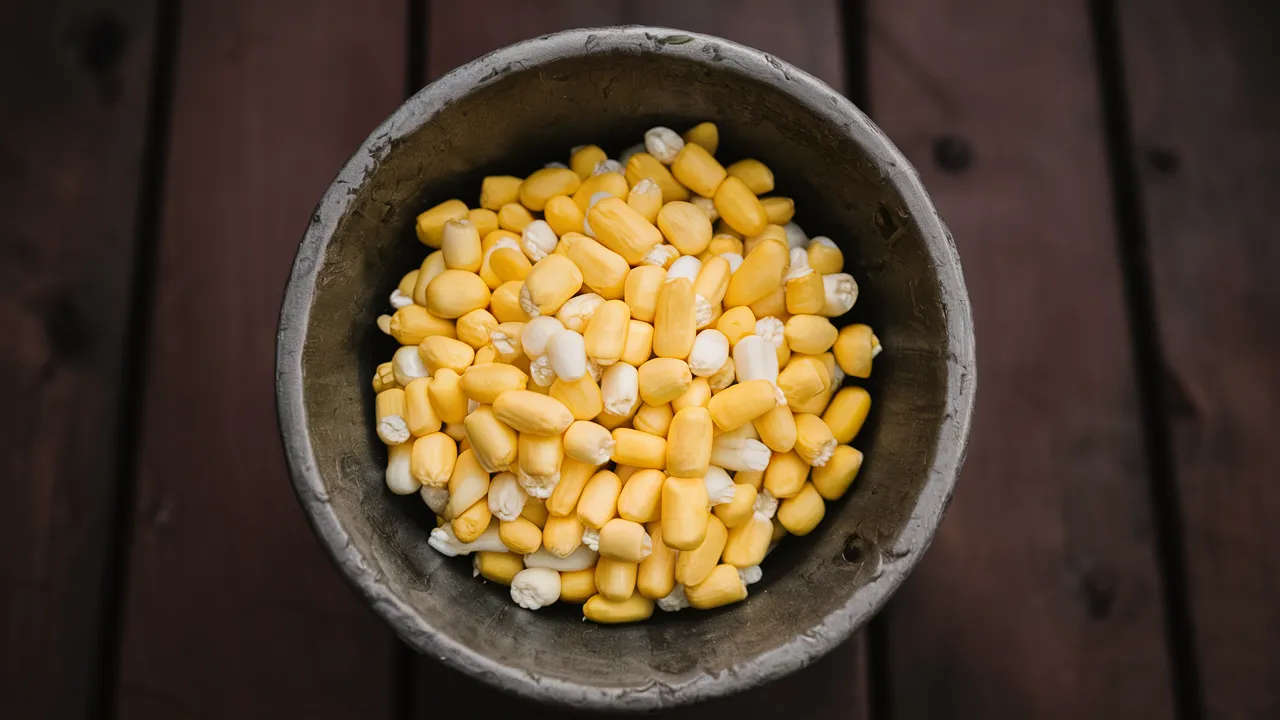
Summer doesn’t mean uniform conditions. Early summer mornings might still be cool, while midday can be scorching. Your groundbait needs to respond differently based on water temperature:
For cooler water (below 68°F/20°C):
- Add more binding agents like flour or semolina
- Reduce fishmeal content slightly
- Consider slower-release attractants
For hot conditions (above 75°F/24°C):
- Reduce binders for faster breakdown
- Increase liquid attractants
- Add more active particles like crushed hemp
One trick I’ve learned for extremely hot days: slightly dampen your groundbait the night before and store it in the fridge. This “curing” process lets the flavors meld together and can make a massive difference in effectiveness.
The Mixing Process: Getting It Just Right
Mixing groundbait isn’t just throwing ingredients together. The technique matters tremendously:
- Combine dry ingredients first – This ensures even distribution of all components
- Add liquids gradually – Water, flavoring, or liquid attractants should go in small amounts
- Use the “two-stage mixing” technique – Add 2/3 of your liquid, mix thoroughly, then wait 10 minutes before adding the final 1/3
- Test the consistency – Squeeze a handful; it should hold together but break apart easily when dropped in water
- Riddle if necessary – For competition-level consistency, pass through a riddle to remove lumps
The most common mistake I see? Over-wetting the mix. Remember, you can always add more water, but you can’t take it out. Your groundbait should hold together when squeezed but crumble easily between your fingers.
Groundbait Delivery Methods for Summer Success
How you introduce your groundbait can be just as important as what’s in it:
Method Feeder – Perfect for precision feeding in lakes and slow rivers. The method feeder excels when fish are actively competing for food in summer conditions.
Ball It Up – The classic approach of forming balls works great, but in summer, consider making them slightly looser to create more attraction.
Groundbait Cage – For flowing water, these cages hold your mix while creating a constant scent trail downstream.
Spod Rocket – For distance work, nothing beats a spod for getting groundbait out to deeper summer holding areas.
I’ve found that during hot summer afternoons, smaller, more frequent groundbait introductions often outperform the “big ball” approach. Fish metabolism is high, but they can become wary of sudden large amounts of food.
Secret Ingredients That Make All the Difference
Now for some closely-guarded secrets that can transform a good summer groundbait into a great one:
Turmeric powder – Just a teaspoon per kilo of mix creates both color and scent that fish find irresistible in warm water.
Condensed milk – A tablespoon mixed with your liquid creates a sweet cloud that works wonders, especially for carp.
Crushed aniseed – The subtle licorice scent triggers feeding in many species.
Brewed coffee grounds – Sounds weird, but a small amount darkens your mix and adds unique attractants.
My personal summer secret? A teaspoon of chili powder per kilo of groundbait. The capsaicin seems to stimulate aggressive feeding responses in many fish. I discovered this by accident when I mixed up some groundbait after handling chili peppers from my garden. The difference was unmistakable.
Testing and Tweaking Your Mix
The best anglers are constantly refining their groundbait recipes. Keep a small notebook with your recipes and results, noting:
- Water temperature
- Weather conditions
- Fish caught (species and size)
- How quickly fish responded
- How long the feeding spell lasted
This kind of systematic approach will help you develop truly deadly groundbait recipes customized for your waters.
Storage and Preparation Tips
Made too much groundbait? Don’t waste it:
- Dry unused wet groundbait on newspaper in a thin layer
- Once completely dry, store in airtight containers
- Label with date and ingredients
- Re-hydrate when needed (it may need slightly more liquid than fresh mix)
For competition anglers, I recommend preparing your dry ingredients in batches, storing them in ziplock bags. This saves valuable time on competition morning and ensures consistency from session to session.
Common Summer Groundbait Mistakes
Let me save you from the mistakes I’ve made over the years:
Over-flavoring – In warm water, less is often more. Strong artificial flavors can sometimes repel fish.
Inconsistent mixing – Take the time to thoroughly combine ingredients for consistent results.
Wrong texture for conditions – Too sticky in summer and your groundbait won’t release attractants effectively.
Using stale ingredients – Bread should be fresh, and meals (fishmeal, etc.) should smell rich and oily, not musty.
Ignoring the wind – Summer often brings variable winds; adjust your groundbait consistency accordingly to maintain accuracy.
The biggest mistake I see repeatedly? Anglers using winter groundbait recipes in summer conditions. The higher water temperatures fundamentally change how the mix behaves and how fish respond to it.
Environmental Considerations
As responsible anglers, we need to think about the impact of our groundbait:
- Avoid excessive groundbaiting that could lead to water quality issues
- Consider using natural ingredients that break down completely
- Never introduce non-native seeds or grains that could sprout
- Be mindful of fishery rules – some restrict certain ingredients
Last summer, I fished a conservation-minded venue that prohibited fishmeal because of water quality concerns. I developed an entirely plant-based groundbait that performed brilliantly while respecting the ecosystem.
Putting It All Together: A Sample Summer Session
Let me walk you through how I approach a typical summer session with homemade groundbait:
The night before, I’ll mix my dry ingredients based on weather forecasts and target species. Early morning, I’ll add water and let the mix mature while I set up. Rather than introducing a huge amount at the start, I’ll begin with 3-4 tangerine-sized balls to gauge fish response.
Throughout the session, I’ll feed smaller amounts regularly, often switching between plain groundbait and groundbait containing hookbait samples. If the bite slows, I might add a small amount of additional attractant or switch to a more active mix with more particles.
This measured approach consistently outperforms the “dump and hope” strategy that many anglers default to.
The Joy of Experimentation
Making your own summer groundbait isn’t just about catching more fish—though that certainly happens. It’s about connecting more deeply with the angling process. There’s a special satisfaction in developing a signature mix that works brilliantly on your home waters.
So this summer, set aside the commercial bags for a few sessions. Experiment. Take notes. Refine your approach. You might just discover that the perfect groundbait for your summer fishing has been waiting to be created in your kitchen all along.
And who knows? Maybe that tournament-winning secret ingredient is sitting in your spice rack right now, just waiting to be discovered.
The Final Word on Summer Groundbait
After three decades of obsessive experimentation, the single biggest lesson I’ve learned is this: consistency beats flashiness every time. A methodically mixed, properly textured groundbait used correctly will outfish the most expensive commercial products or complex recipes.
The second lesson? Trust your results, not conventional wisdom. When I first added black pepper to my mixes, fellow anglers laughed. When I started using condensed milk powder instead of liquid additives, I was mocked. But the results spoke for themselves, and eventually, those same anglers started asking for my recipes.
Develop your own summer mixes based on these principles, test thoroughly, and keep detailed notes of your results. Your best groundbait might be just one ingredient adjustment away from transforming your summer fishing completely.
Now stop reading and get mixing. The fish are waiting.
